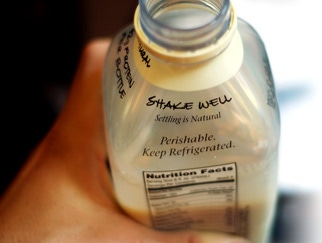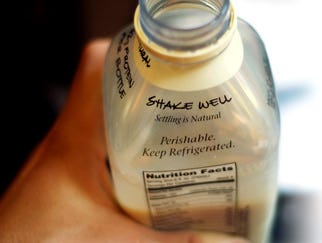Future is strong for wide range of beverage packaging
January 29, 2014

 This year, for the first time, plastic is the main form of packaging for beverages with a third of the market share worldwide, just ahead of glass and well ahead of cans. Almost all types of packaging are represented at drinktec 2009, which is taking place in Munich from 14 to 19 September 2009, and is the fair where manufacturers display their capability and packaging innovations.
This year, for the first time, plastic is the main form of packaging for beverages with a third of the market share worldwide, just ahead of glass and well ahead of cans. Almost all types of packaging are represented at drinktec 2009, which is taking place in Munich from 14 to 19 September 2009, and is the fair where manufacturers display their capability and packaging innovations.
Plastic is racing ahead
In the plastics segment, PET containers are the top favorite in the one-way container bottling sector. According to estimates by the market research company Euromonitor, in 2009 the number of PET containers produced will rise to 350 billion per annum, which makes it all the more important to produce PET containers as economically as possible. A significant trend in PET bottles is weight reduction, which saves material. A range of exhibitors at drinktec, producers of preforms and machine manufacturers, are addressing the issue of lightweighting. Reducing the material used, in particular the carrying ring, can result in considerable cost savings when purchasing materials. And PET containers are continually increasing in size. Large-volume PET bottles are in demand in South, Central and North America in particular, as the market for soft drinks there is for three liter containers or bigger. In parallel with this, the market for PET water dispensers with a capacity from five to twenty liters for offices, businesses and households is booming in many countries.
The 3rd PET World Congress is taking place during drinktec in the International Congress Centre (ICM) on 16 and 17 September, where PET will be centre-stage in the proceedings. At the fair itself, PETpoint has been an important part of drinktec for a long time, and producers from all over the world will be exhibiting the latest PET technology for beverages and liquid food in Hall B3.
While PET continues on the road to success, other plastics such as HDPE or LDPE are of greater interest to some other segments, milk and milk-based drinks for example. At the same time new means of packaging are being developed - and consumers want to find out about them. On the subject of sustainability, ‘organic plastics’, based for example on starch (PHA) or lactic acid (PLA), are gaining in importance. The 2nd PLA Bottle Conference on 14 and 15 September at the Holiday Inn hotel gives an overview of this subject and takes a look at the availability of raw materials plus the latest developments and waste management options.
Recently customers have come to appreciate the user-friendliness of pouch packaging. The advantage of pouches is that they use very little packaging material, with such ecological and economic benefits as low material costs, and as a result low transportation costs. Experts are assuming the future growth in pouch packaging will be around 10 percent per annum.
In the soft drinks and mineral water sector there is great interest in lighter, more cost-efficient closures, and so it is expected that at drinktec 2009 producers will be displaying new closure concepts with special designs which enable weight savings.
Glass protects
Glass as a material still provides a lot of scope due to its mechanical and chemical resilience. It is very important in the beverage and food industry due to its property as a barrier. The increasing number of environmentally aware and health-conscious consumers is generating a long-term trend which concerns all areas of life. The demands of these consumers applies to both products and packaging equally, and glass in particular ought to benefit from this change in values. For these reasons there are excellent long-term opportunities in the market for manufacturers who use glass packaging.
Embossed cans
Beverage cans are light, stackable, non-breakable, convenient to open, offer long product shelf-life and have very good recycling properties. Thanks to their technical potential, they are outstandingly suitable as a medium for innovative product launches. In addition to the pleasure gained from the product inside the can, the option of embossing, for example, adds an extra tactile dimension. A new development being displayed by one drinktec exhibitor is completely embossed cans, while another drinktec exhibitor will soon be presenting the first resealable beverage can.
The trend for weight reduction also applies to cans. The weight of today’s 0.33l tinplate cans is around 22 g. Aluminum cans, with a sheet thickness of 0.25 mm, weigh only 11 g. Opening mechanisms, design opportunities using coatings and embossing processes, the use of widget technology – for example using nitrogen to create a better head in canned beer – or labeling on the can end, all allow beverage cans to really stand out. The use of digital printing to customize round can bodies is also of interest. These options are valued in the beverage market.
Crates, barrels, bag-in-box
The bottle crate is an important cornerstone in the marketing of beverages in reusable containers. Crates in different sizes and designs are robust containers for the reusable systems used in many markets. Brand identification is directly linked to the high-quality appearance of the crate. And this is getting increasingly consumer-friendly, with sides that can be opened allowing the label to be seen, with a central handle along the length of the crate to make it easer to carry, with divisible transportation solutions or eye-catching surface finishes.
There is always something happening with beer barrels too. Smaller volumes, more manageable sizes and complete barrel systems are all on offer to the markets. For example, a new, practical barrel system comprises a complete dispensing system and a replaceable reusable barrel with integrated carbonic acid, dispensing with the need to clean beer pipes. The new system is ideal for use in hotels, smaller restaurants and cafés, and for events.
Still making headway, and designed especially for wine and fruit juices, is bag-in-box packaging, which enables a long shelf-life with no preservatives due to the sterile filling process.
All the packaging manufacturers at drinktec are concentrated in Halls A1 and A2.
Brand presence on the shelf decides the competition
Depending on the type of product, more than two thirds of purchasing decisions are made at the shelf. The competition is decided then and there by what the consumer favors, and it is on the shelves that the brand must make more of an impact. There are also an increasing number of ways to design original packaging for beverages, developed from the brand and the product. Beverage containers can vary in shape and color or have printed labels. There is also a creative field for packaging as secondary placements, gift packaging, multipacks and packaging with added value.
Flexible cans, as they are known, which have just started to be used for beverages, are being produced on combined shaping, filling and sealing machines. The film is digitally printed specifically for the customer. The flexible can is light to transport, as only four grams of packaging are required for a 200 ml container. It is particularly suitable for events packaging, and is really a flexible stand-up pouch which, due to its cylindrical shape, has good rigidity.
The future of packaging, as drinktec 2009 will show, is becoming varied, interesting and intelligent.
For more information, visit www.drinktec.com
Source: drinktec
Photo by David Goehring
You May Also Like


